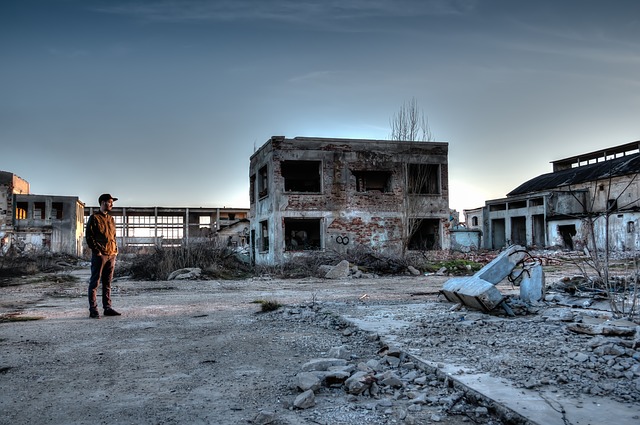
Rebuilding After a Disaster
Hurricanes, fires and other disasters can cause widespread devastation that threatens the safety of your family and home. But once a disaster passes, you aren’t necessarily out of danger. If your home is damaged, it may not offer sufficient protection for your family. Plus, assessing damage and the rebuilding process itself can be costly, even if your insurance policy helps to pay the bills.
Returning Home
Before you can rebuild or repair your home, you’ll have to complete detailed inspections to see the extent of the damage. However, you should also keep your immediate safety in mind at all times. Even if you’re eager to return home, there could be a number of hazards present after a disaster that aren’t easily visible.
Here are some tips for when you re-enter your home:
- Don’t return to your neighborhood until it’s declared safe by local officials.
- Inspect the outside of your home for cracks in the foundation and sagging in the roof.
- Don’t enter your home if there’s a hazard present, such as damaged power lines, floodwater that’s above the basement or the smell of natural gas.
- Walk through every room of your home with a friend or family member, and take note of any noticeable damage or lost property.
- Don’t drink tap water until it’s been declared safe by local authorities.
- Be aware that wildlife may have taken refuge in your home, especially after a flood. Use a shovel or other long tool to rummage through anything you can’t see, and never approach a wild animal directly.
- Never force open a door that appears to be jammed. It’s possible that damage to your home has forced a door to support some of the building’s structure.
- Refrain from using wired electronics until you know the electrical systems are working properly.
Cleaning and Repairs
Once you’ve determined that your home is safe, you many want to start cleaning or performing small repairs yourself. However, the precautions you take during the recovery process can change depending on the type of disaster that affected your area. Use the following best practices to identify potential hazards in your home and prepare yourself for the cleaning and rebuilding processes.
General Best Practices
- Be aware of hazards that may be unique to your home. For example, older homes may contain lead paint, asbestos or other dangerous substances that can become exposed after a disaster.
- Wear appropriate protective equipment. You should always wear gloves and goggles when cleaning chemical spills or working with household cleaners.
- Read the manufacturers’ instructions on all cleaning products and devices before using them.
- Never mix chemicals together, either when disposing of them or using them to clean.
- Be aware of carbon monoxide hazards. Because the gas is difficult to detect and your home’s carbon monoxide detectors may not be working properly, it can be hard to detect a dangerous buildup of carbon monoxide. Never use fuel-burning devices inside your home, including portable generators that run on gasoline.
- Remove any standing water from your home as quickly as possible. Standing water can serve as a breeding ground for microorganisms and disease-carrying insects.
- Check the outside of your home to see if wind or debris has damaged the roof, windows or siding. If the damage appears to be severe, consult a professional about making repairs.
- Properly dispose of all waste materials and garbage, and never burn them.
- Take pictures of your home before and after it’s repaired. These pictures may help when making insurance claims.
- Make a record of any important documents that were damaged or destroyed, such as passports, birth certificates, Social Security numbers and insurance policies.
- Keep the receipts for any purchases you make while cleaning or rebuilding.
- Contact us at 831-661-5697 for help getting in touch with certified professionals and reviewing your homeowners policy.
Floods
- Wear an N-95 respirator if mold is present. If standing water has been in your home for at least two days, it’s likely that mold has begun to grow.
- Call a professional to help you clean if there’s a large amount of mold present.
- Remove any standing water as quickly as possible. However, if your basement is flooded, you should only pump out about one-third of the water a day. If any more is pumped out, it could cause the walls to collapse or the floor to buckle.
- Dispose of any food and containers that came into contact with floodwater, even if they appear to be airtight.
- Clean and dry all hard surfaces in your home. If anything can’t be cleaned and dried, it should be thrown away.
Fires
- Enter your home only after the fire department has said that it’s safe. Fires can cause severe damage to a building’s walls and floors, and they may not be structurally sound.
- To protect against serious health risks, avoid contact with soot and dirty water left over after a fire.
- Wear a mask while cleaning to prevent the inhalation of ash, soot and other residue.
- Check to see if your utilities are in working order. The fire department usually turns off utilities when fighting a fire and will know if they’re safe to use. Never try to turn your utilities back on by yourself.
- Use cleaning products that contain tri-sodium phosphate to help reduce the odor of smoke. Be sure to read the manufacturer’s instructions before you use one of these products.
- Use a mild soap and warm water to remove stains from soot and smoke from hard surfaces. Make sure to rinse and completely dry all surfaces shortly afterward.
- Talk to a professional about replacing drywall or insulation that’s been soaked by water from fire hoses.
Working with Contractors
Hiring a contractor to repair your home is a good way to make sure the job is done professionally. Unfortunately, disasters also attract scam artists who prey upon those affected by a disaster, and you need to remain skeptical when using contractors. Here are some best practices for working with a contractor:
- Only use contractors who have a good referral from Scurich Insurance, family members or friends.
- Check to see if complaints have been lodged against a contractor you’re considering by visiting www.usa.gov/state-consumer.
- Be wary of contractors who encourage you to spend too much, offer “special deals” or ask for your credit card number before you’ve signed a contract.
- Ask to see copies of contractors’ general liability and workers’ compensation insurance policies before you work with them.
- Get a written price estimate that includes any spoken promises made by a contractor.
- Take your time to review a contract before you sign it, and be sure to ask for explanations about any price variations you notice. It’s also a good idea to get an attorney to review a contract before it’s signed.
- Never agree to pay a contractor upfront. A deposit of one-third the total price is standard.
- Only pay contractors with a check or credit card, and pay the final amount only after the work is finished and has passed your review. Also, keep in mind that paying with a credit card may offer protection from your bank and the credit card company if the contractor makes an unauthorized purchase.
Recovery Resources
Recovering from a disaster of any type is an extremely stressful experience, and one where your family’s safety and financial future may be in doubt. Here are some resources you may be able to use to help provide for your family and rebuild your home:
- Scurich Insurance, available by calling 831-661-5697
- Immediate needs federal website
- Federal Emergency Management Agency assistance website
- Federal disaster assistance website
- Disaster unemployment assistance program
- Disaster legal services website

